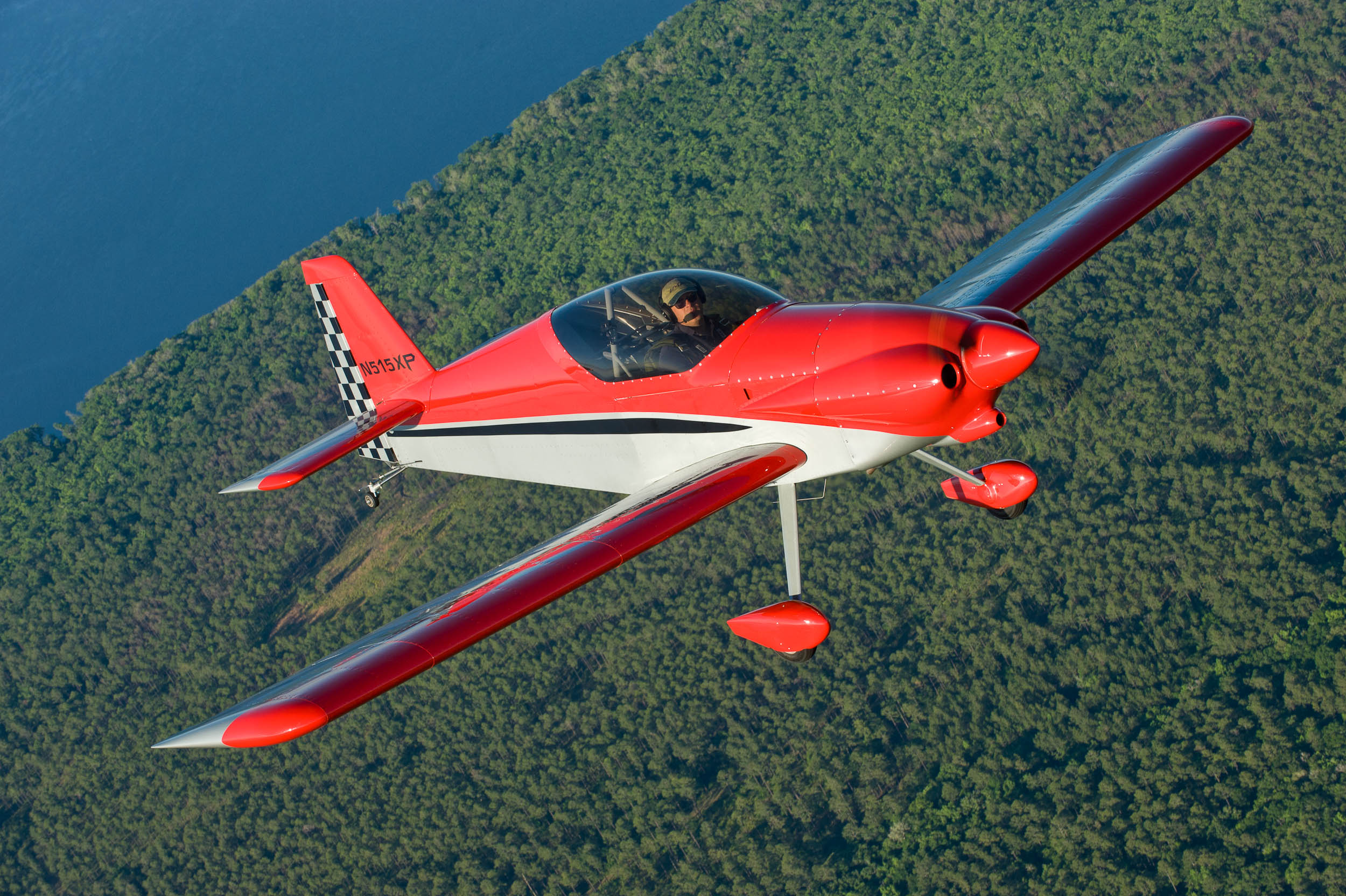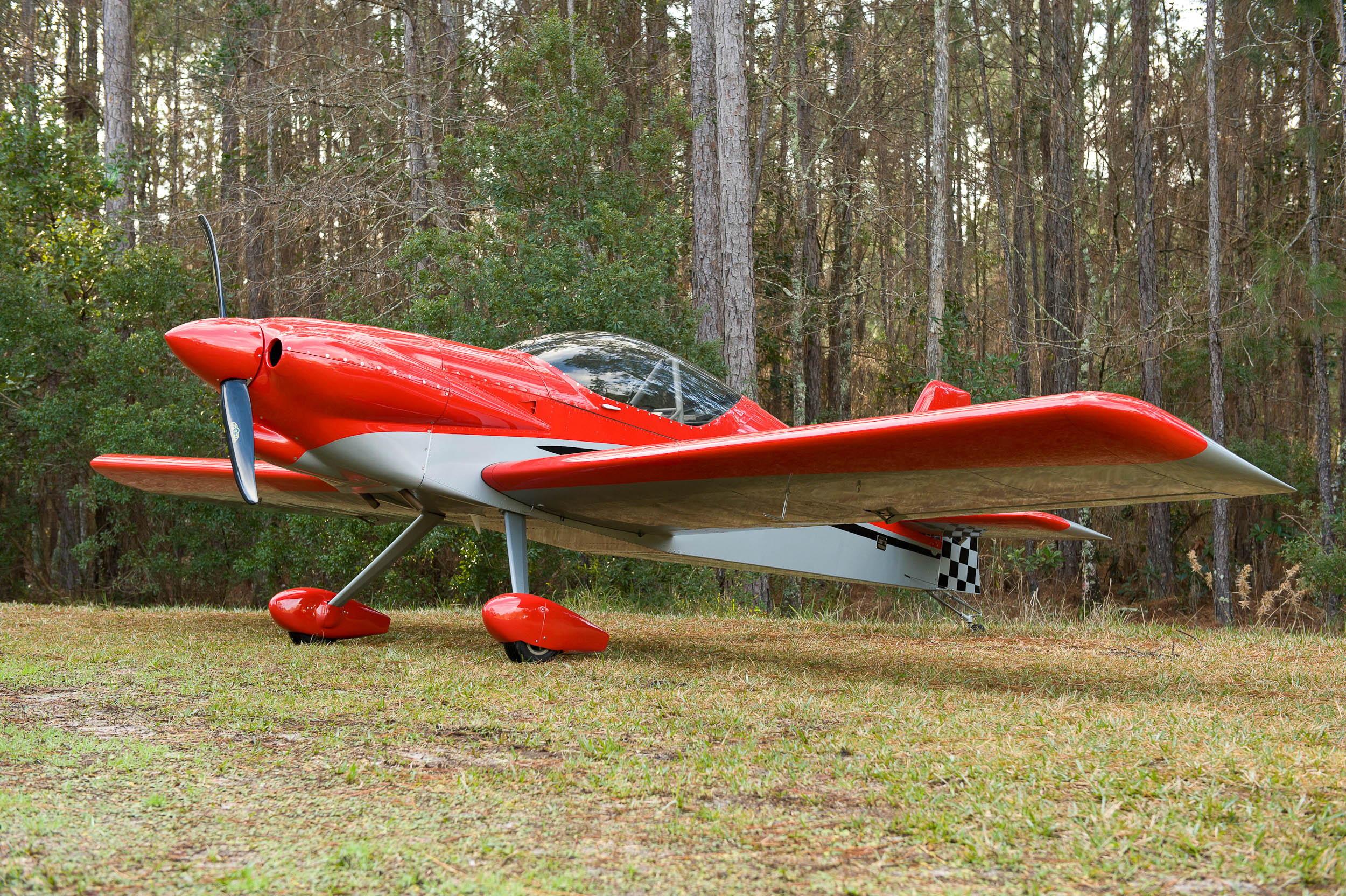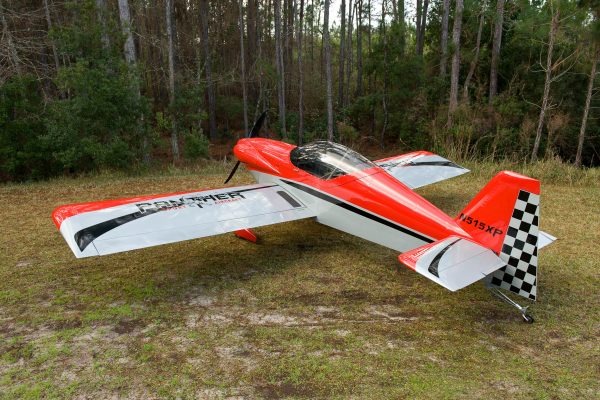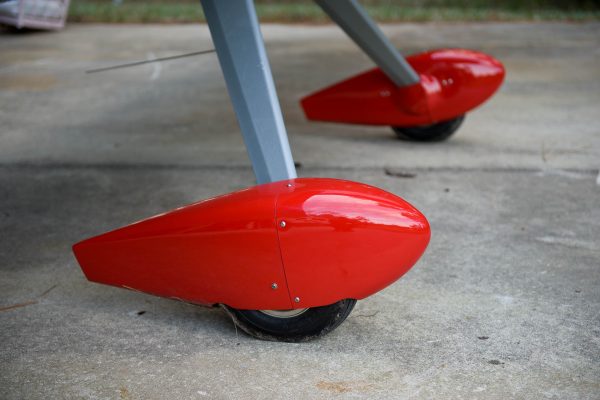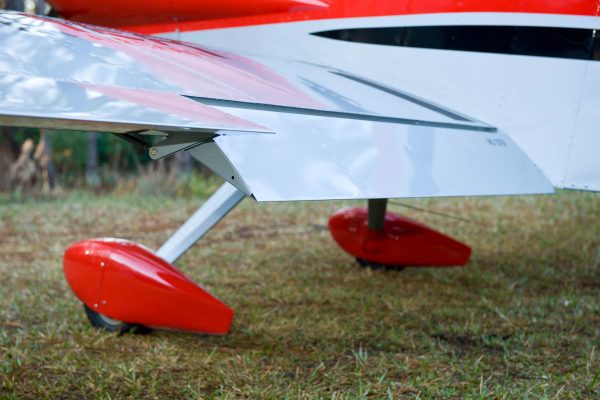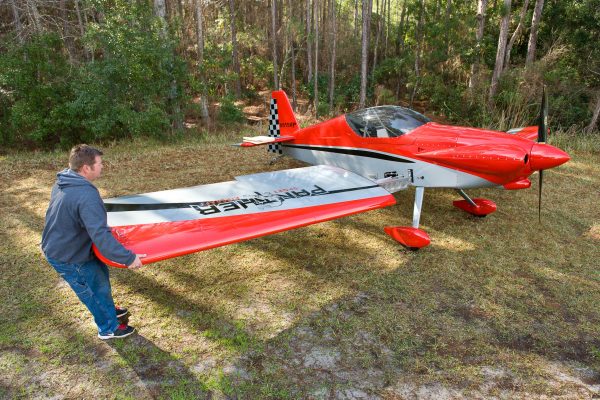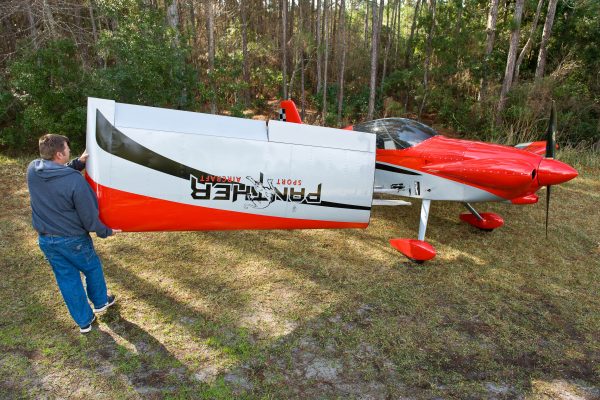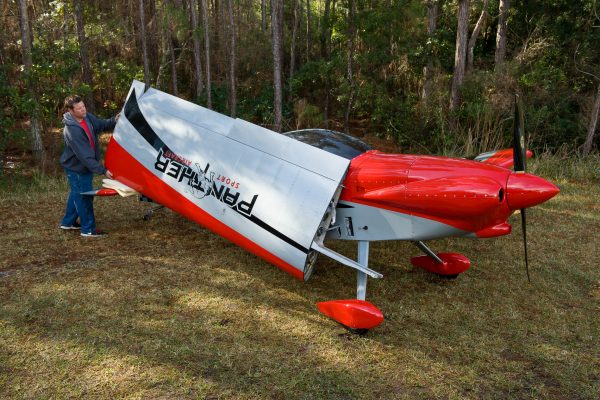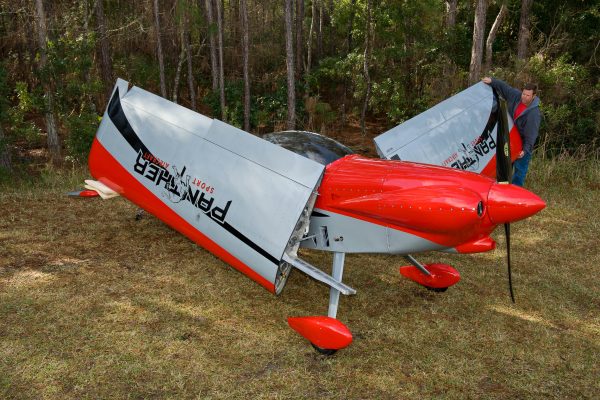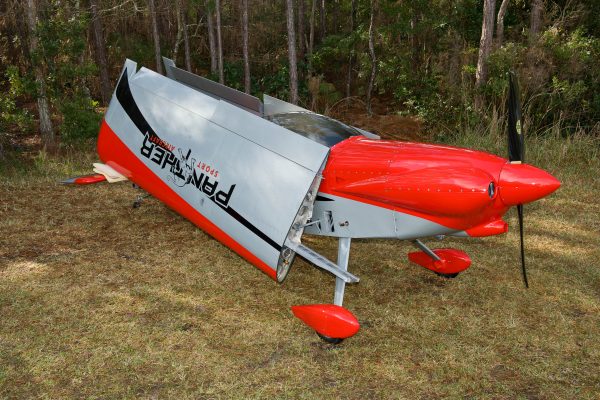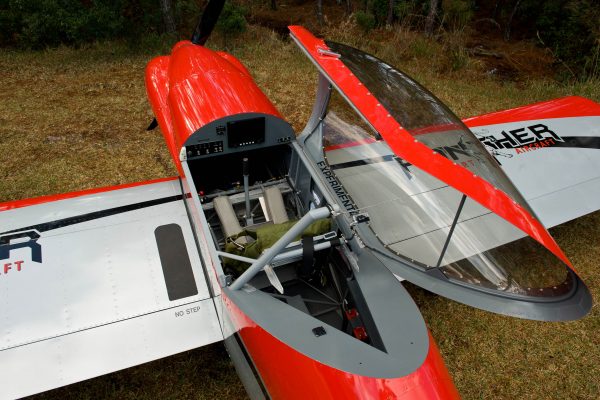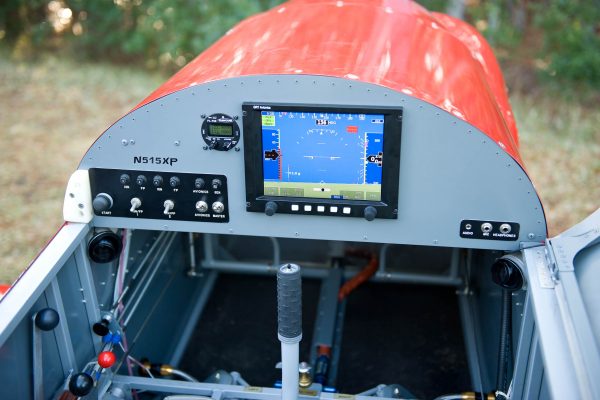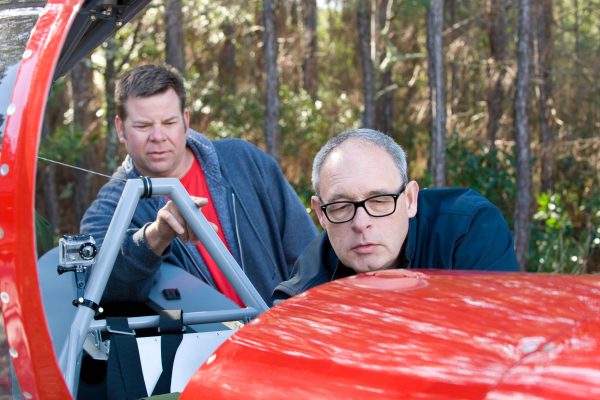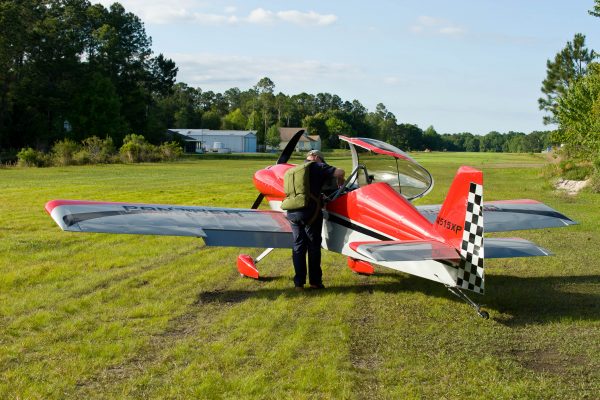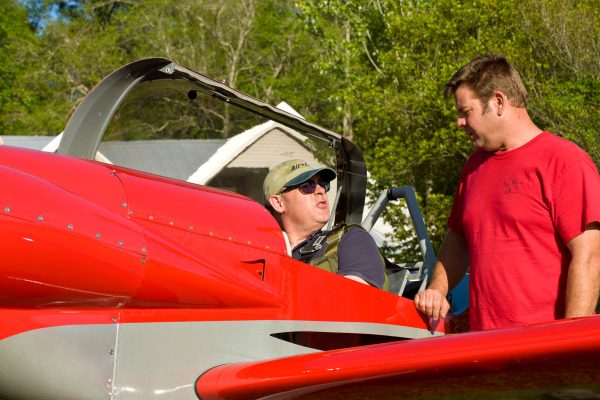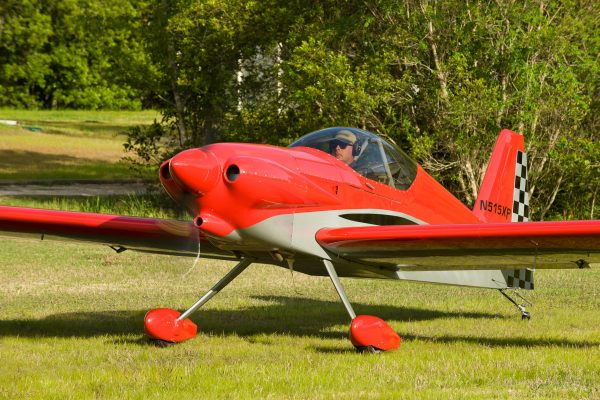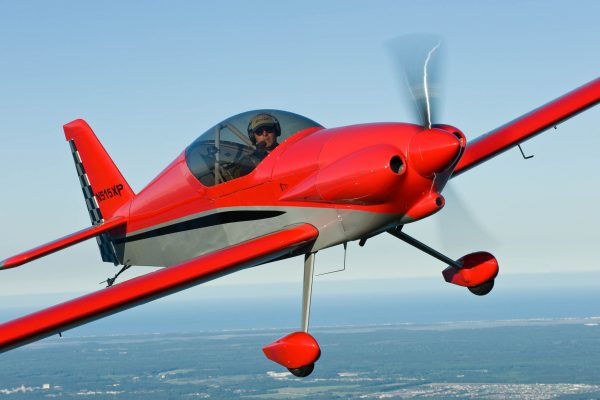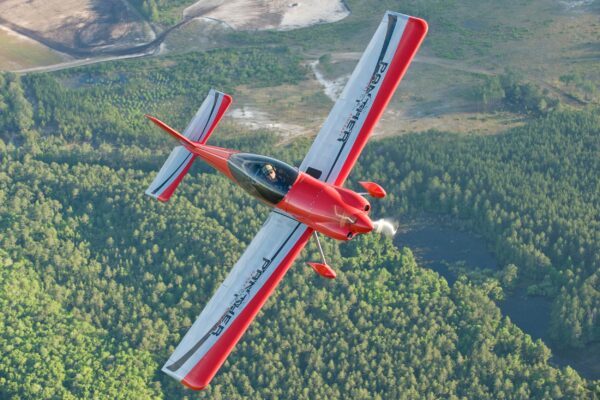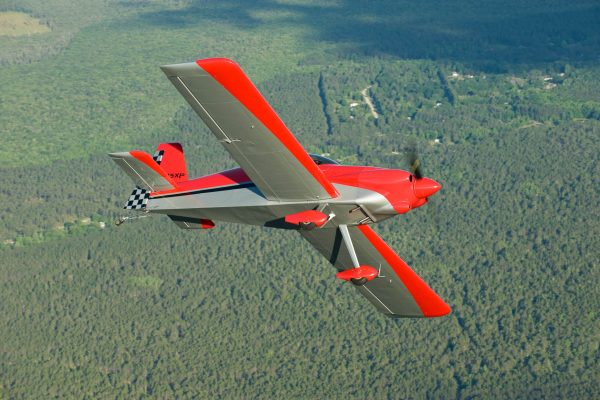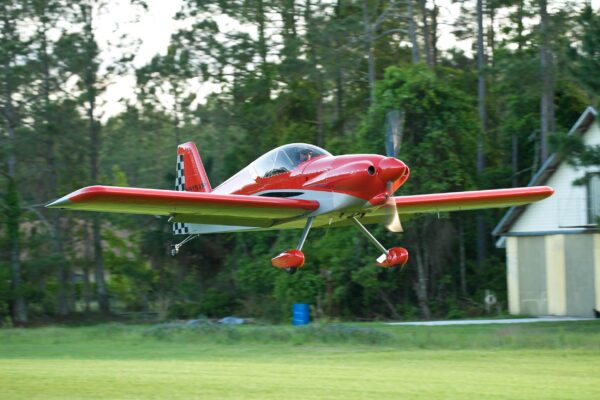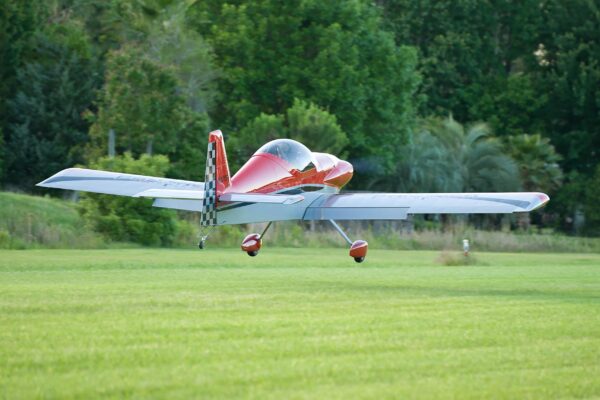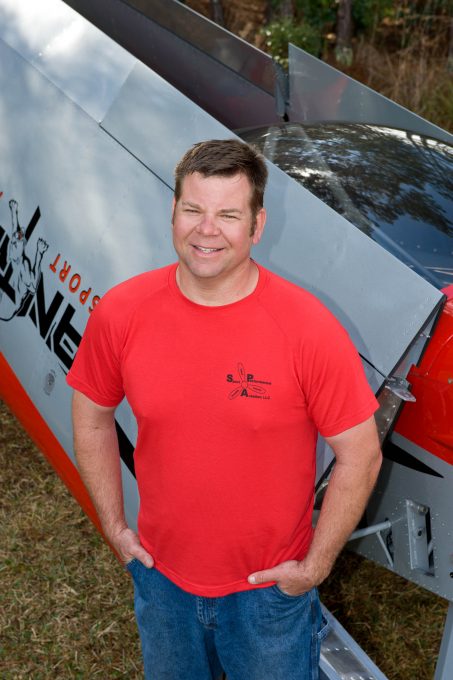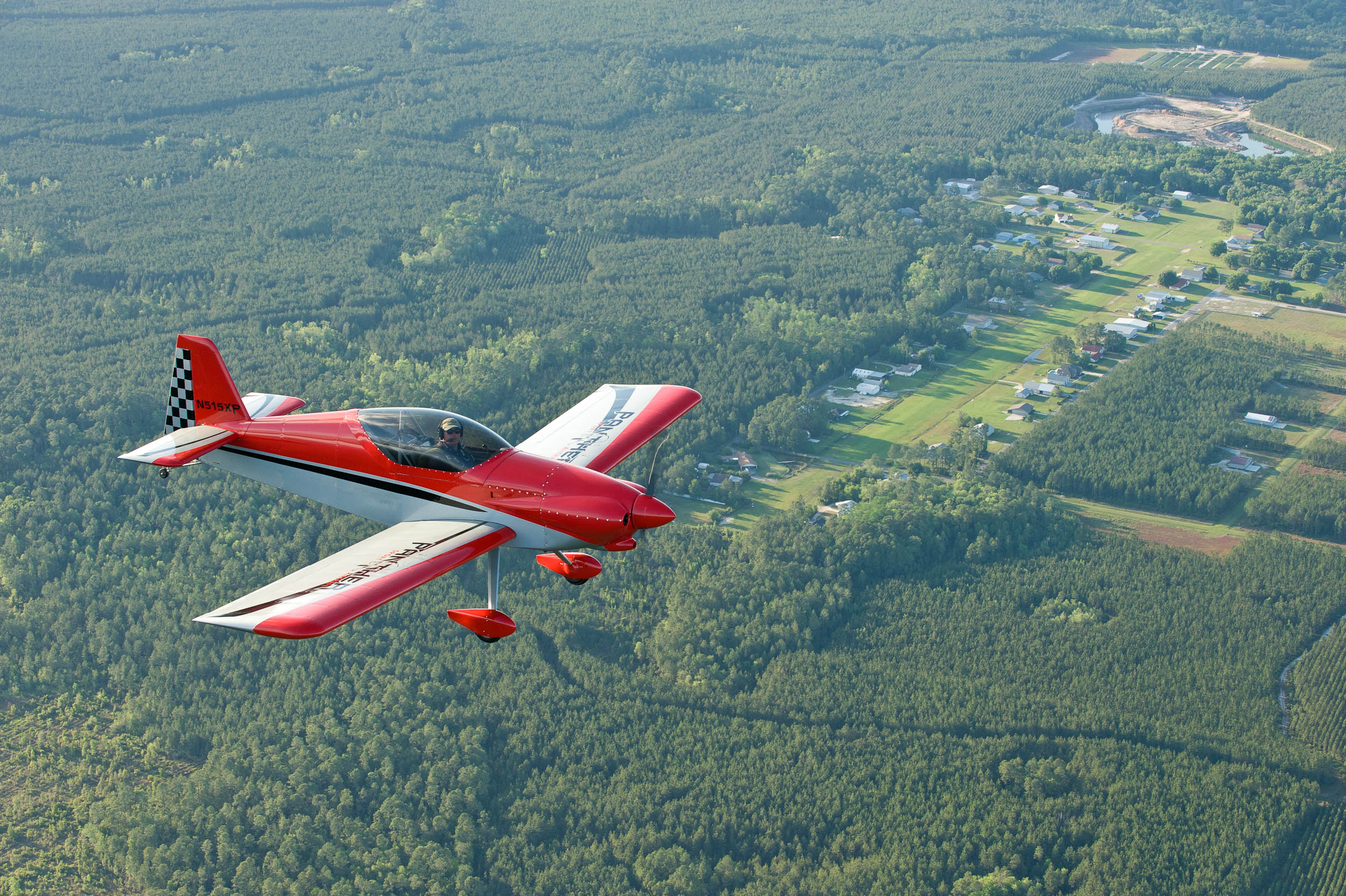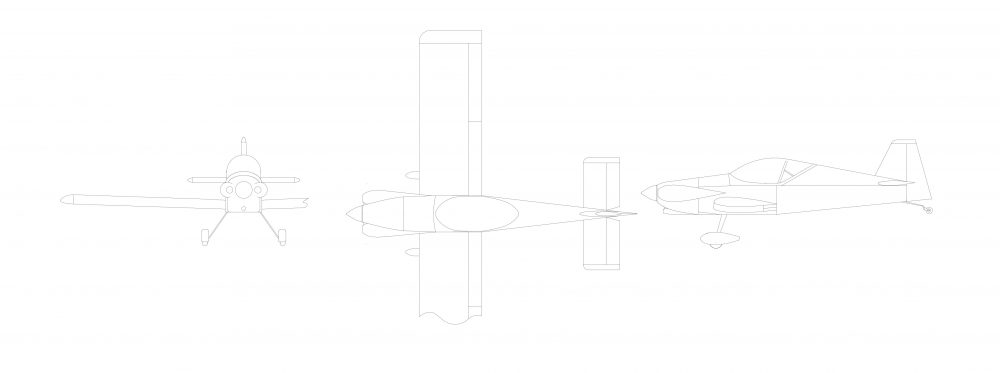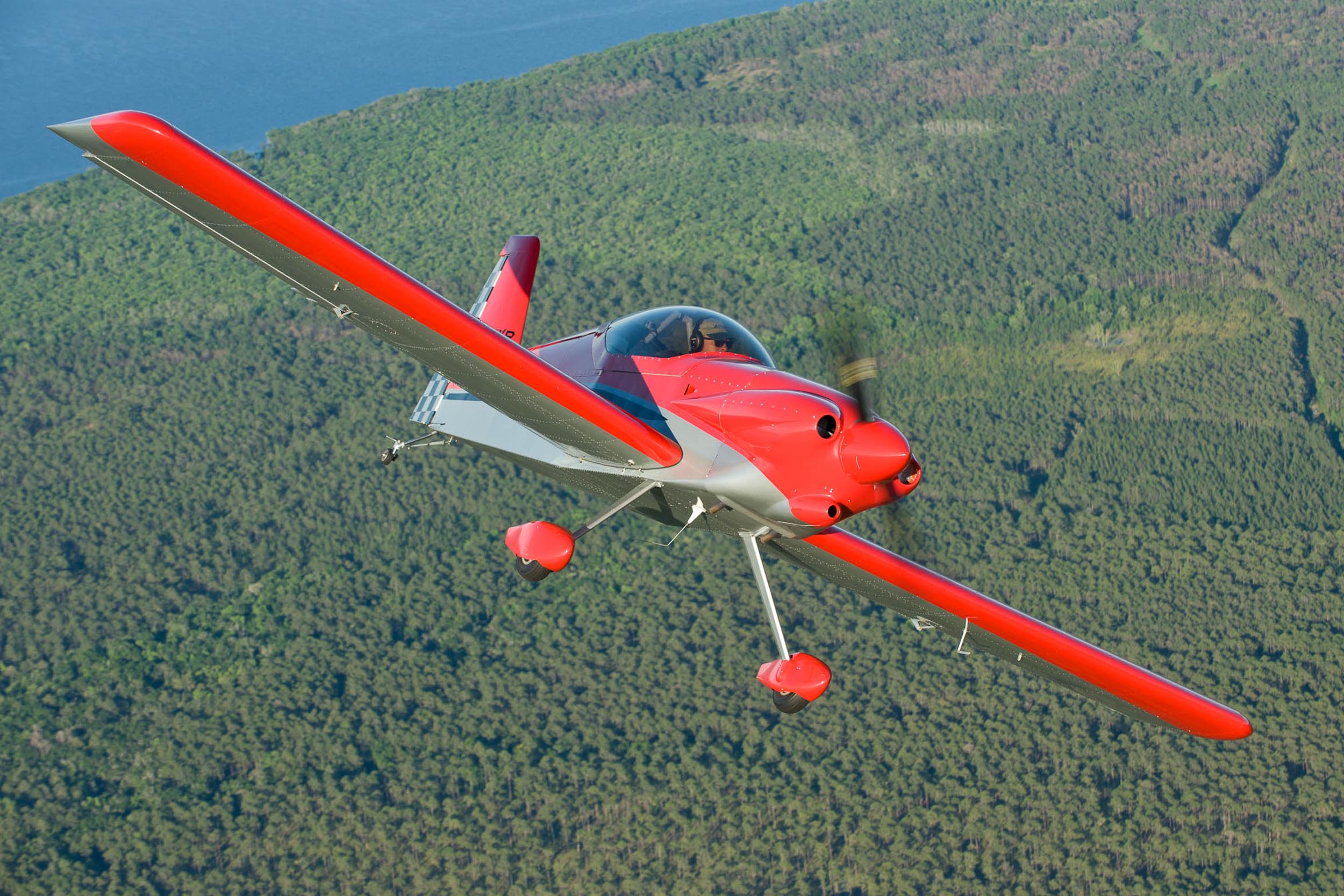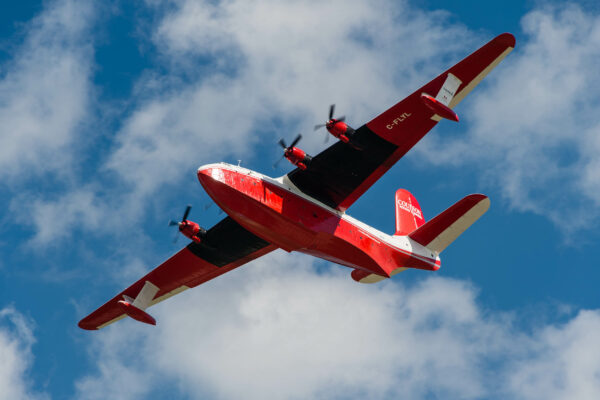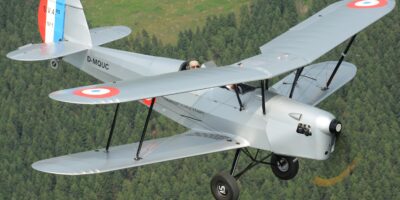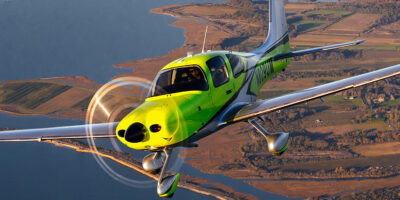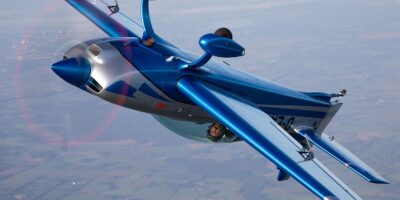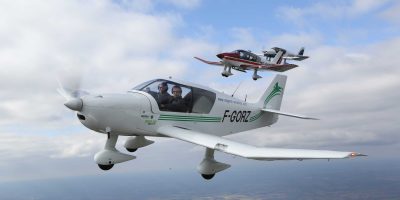Up front, SPA’s prototype is fitted with a Corvair engine, basically an aero conversion of the six-cylinder, horizontally-opposed, air-cooled car engine, which develops about 105hp in this installation. It was a natural choice for the first airframe as SPA has long been involved with Corvair conversions, making parts for an optional fifth crankshaft bearing, amongst other things. However, for now at least it is a bit of an unknown in the UK, and even in the US there are Panther beta builders who are planning to fit alternative engines, so while SPA won’t be able to support every single option known to builderkind, it is planning support for many common options including Lycomings, Continentals and possibly Jabirus, ULPower and even the ubiquitous Rotax.
Comfortable & simple office
Haller Airpark is very much a small aviation community and you get the impression that many of them feel part of the Panther story. On the afternoon of my flight there were quite a few people hanging around; they were looking at the Panther, socialising and generally doing what aviation people do when they get together. Dan decided to take the Panther for a flight, partly to check for any squawks, partly to show me through his overhead aeros routine that he had every confidence in the aeroplane and partly, I imagine, to have one last flight, just in case I messed it up.
I’d spent a fair bit of time reading the pilot notes and talking through various phases of flight with Dan. Of particular note was that the engine turns the prop the other way (just like an Auster or Chipmunk); the Corvair might rich cut with the combination of full carb heat and a sudden application of power; and it doesn’t like negative g, but a re-start in the air is easy. Like any other aeroplane, it’ll float if you are too fast and stall if you are too slow (put down that keyboard, we know about AoA and 1g stall speeds).
The first thing that strikes you when you climb into the Panther is the feeling of space. This is a cockpit that’s been designed for real people, and for the hard of reading – yes, that’s a euphemism for those of us who’d benefit from spending less time at our desks and more at the gym. Both the seat rake and the rudder pedals are adjustable, so it’s easy to get comfortable.
On the left-hand side of the cockpit you’ll find three levers, one for trim, one for the throttle and one for the mixture, plus a plunger-type control that operates the carb heat. Just ahead of the stick is a fuel tank selector (left, off, right) and there are toe-brakes on the rudder pedals. Beside my left leg is a bar for operating the flaps, which are either up, 10 degrees down or fully down.
The panel is beautifully simple and dominated by a Grand Rapids EFIS screen. Other than that there’s a small radio and just four switches, six contact breakers and one start button. Bliss. The only thing I’d do differently would be to replace the fuel valve with one from Andair; it’s not that the current one doesn’t work, more that Andair’s a Brit success story and that it makes very beautiful fuel valves.
With the five-point harness tightened, it’s time to close and lock the canopy; a lever locks pins into position when pulled backward, which is a bit different to most things I’ve flown. With the canopy closed and locked, I find myself both glad of a little solitude and wishing for some air-conditioning. Right, better get on with it before I melt.


